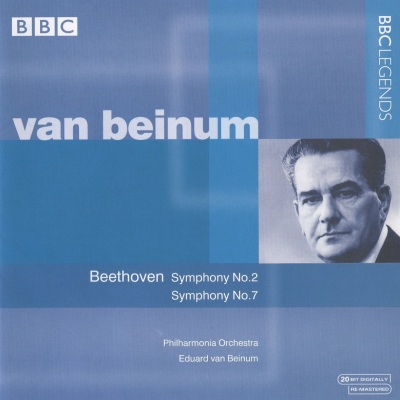
Beethoven: Symphony No. 2; Symphony No. 7
Artistic Quality: 5 Sound Quality: 4 It’s good to see interest in the work of Eduard van Beinum increasing. He’s always enjoyed something of a cult following, but it’s hard to imagine a less likely “cult conductor”. Like his successor Bernard Haitink, Beinum was a thorough musician whose interpretations did not indulge any overt eccentricities, attention-getting fluctuations of tempo, or peculiar mannerisms. In this respect he represents the diametric opposite of Wilhelm Mengelberg, and perhaps more than any other single musician he built the Concertgebouw Orchestra into the modern marvel that it remains today by emphasizing the musical virtues of fine rhythm, keen internal balances, judicious tempos, and an acute sense of the long lyrical line. All of these qualities are quite evident in his recordings, most for Philips, of both standard and modern repertoire. Given his interpretive preferences, Beinum is not the best candidate for “historical” reissue, to the extent that what makes his performances special requires better sonics than those on offer here. The opacity of these mono 1958 live air checks prevents what no doubt would have been much characteristic detail, particularly in the wind parts, from penetrating the general mass of tone. Note for example the booming timpani in the Second Symphony (opening of the finale), the blurred articulation (absent which the comparatively slow scherzo of the Seventh Symphony might have sounded more rhythmically charged), or the coagulated mass of tone that characterizes the opening of the Seventh’s finale. Mind you there’s nothing bad here, but there’s nothing special either, or at least nothing dazzling that’s readily audible. It goes without saying that the Philharmonia, engaged during this period in making Klemperer’s stereo Beethoven cycle, overall plays very well. There’s no questioning the orchestra’s commitment, or Beinum’s typical proficiency. Still, those interested in what made this conductor special are better off looking to his numerous studio recordings, particularly of Debussy, Bruckner, Berlioz, Brahms, and Handel, many of which are still available–and with good reason. Review by: David Hurwitz, classicstoday.com
